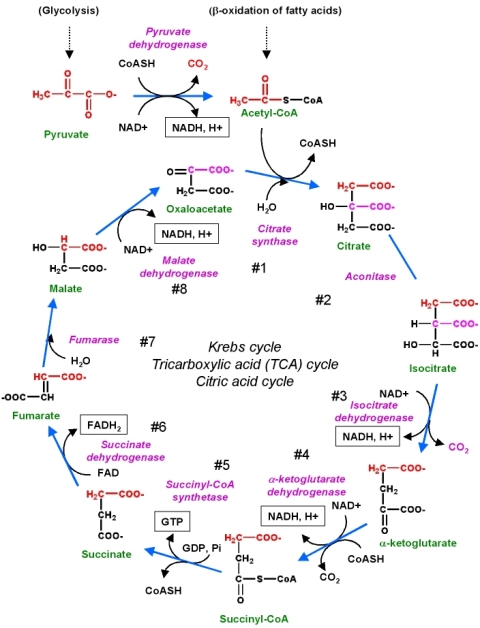Credits to Biochem
students Carlos, Shenelle, Liniker, Latisha, et. al
This video started with a revision session of Glycolysis.
Things that we learnt before:
- Glycolysis is the splitting of Glucose (a 6 Carbon Sugar) into 2 Pyruvate molecules (2 3-Carbon molecules).
- It occurs in the cytosol of cells, he stated that Glycolysis takes place in the cytoplasm of the cell which is not true.
- It produces a net gain of 2 Atp and 2 NADH moleules.
In the video he told us that Glycolysis take place in the presence or absence of Oxygen (Aerobic or Anaerobic conditions).
New Material
- The Krebs Cycle is also known as the Citric Acid Cycle (substance found in orange juice).
- It takes place in the inner space of Mitochondria (Power House of cells).
- Mitochondria has a double membrane outer and inner.
- The inner membrane of the mitochondria is called the ‘Crista’ (plural Cristae).
- Therefore it has 2 compartments
- The outer compartment.
- The Matrix.
- A combination of Acetyl CoA (2 Carbon molecule) and Oxaloacetic Acid( 4 Carbon molecule) to form Citric Acid (6 Carbon molecule) is what enters the Krebs Cycle.
- All reactions are catalyzed by enzymes.
- Carbons are lost via Co2 gas.
- The Purpose of the Krebs Cycle is to generate ATP, NADH, FADH2 etc.
- NADH and FADH2 produced here will go into the ETC (Electron Transport Chain) to generate much more ATP than in the Glycolysis Pathway and the Krebs Cycle.
Net Gain:
- 14 Atps
- 10 NADHs
- 2 FADH2s
- 6 CO2
Below is a detailed picture of the Krebs Cycle.



0 comments:
Post a Comment